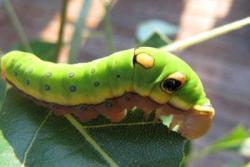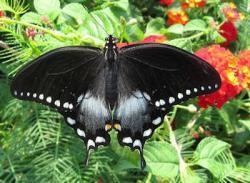@LindaTX8 You are so right about them wandering away!! When we first started raising caterpillars indoors we would frequently do it in the open and we had several wander off that we had to hunt down and put back on the sticks we wanted them to pupate on! Now most of ours are raised in enclosures.
However, my Camphor tree is a little too big to enclose, but, the Spicebush Swallowtail cats are kind enough to turn bright yellow right before they get ready to pupate. I am a stay at home mom so we have been able to catch most of them and put them in an enclosure before they wander off.
In the past, we have on occasion had a butterfly "appear" in our house and not know that we had him. All in all, we have contributed much more to the butterfly population than we have taken away so I don't get too upset about an accidental loss of a butterfly or caterpillar. Their chances of success are immensely higher in our house than outdoors!!

